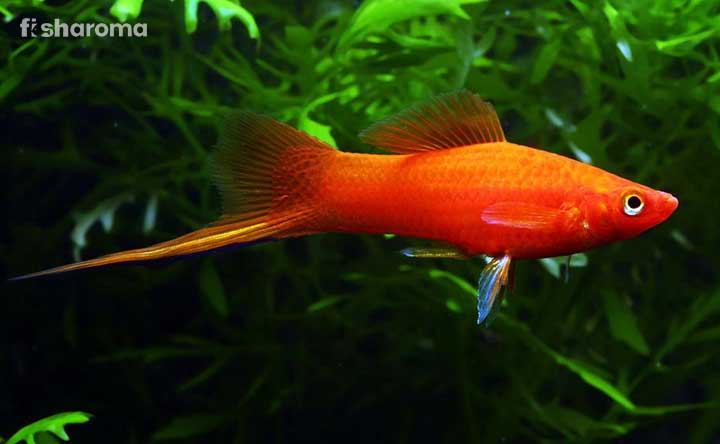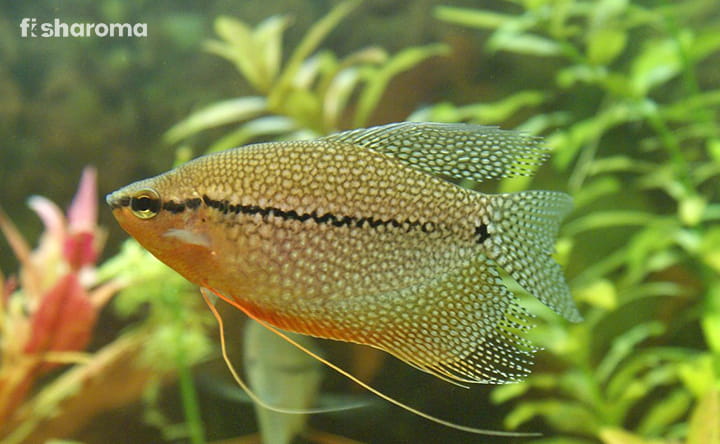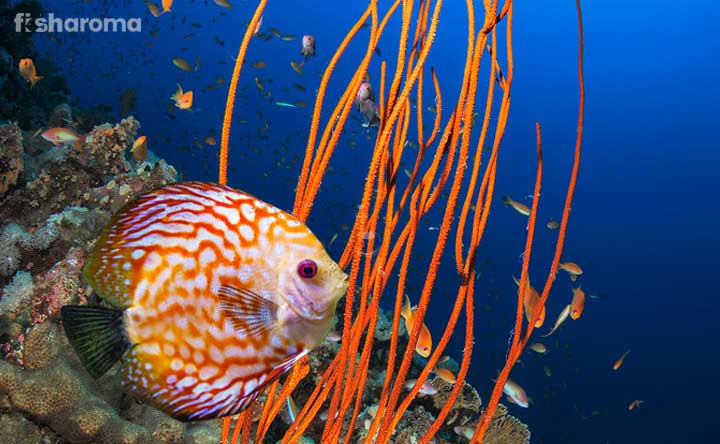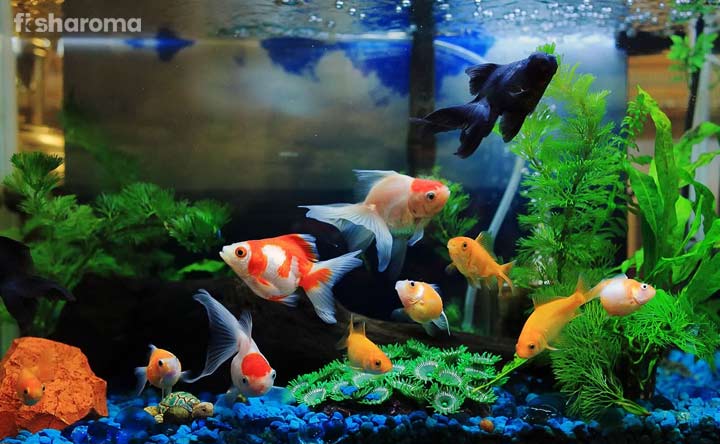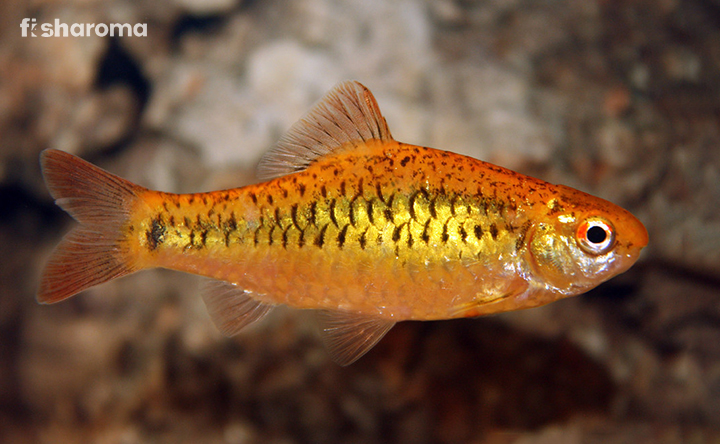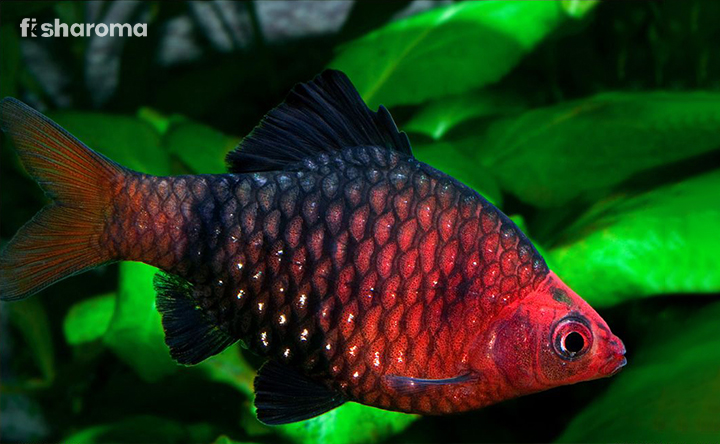Glass Catfish Care Guide – Feeding, Breeding, Tank Requirements and More
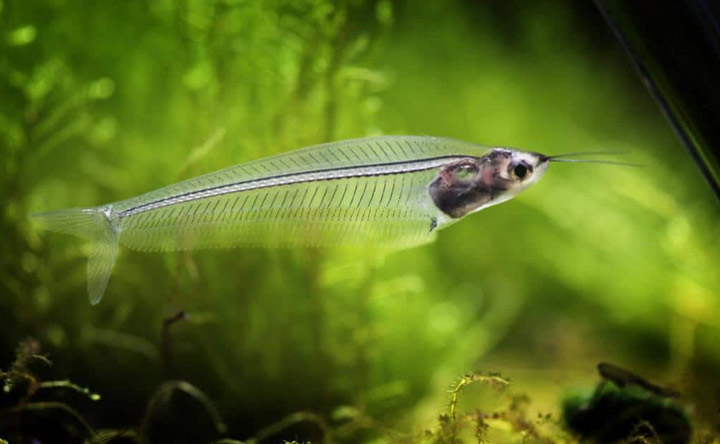
- Origin of Glass Catfish
- Appearance of Glass Catfish
- Temperament of Glass Catfish
- Suitable Tankmates for Glass Catfish
- Dietary Requirements for Glass Catfish
- Tank Requirements for Glass Catfish
- Water Type for Glass Catfish
- Breeding Process of Glass Catfish
- Diseases of Glass Catfish with Interventions
- Difficulties in Keeping Glass Catfish in Aquarium
There is no doubt that Glass Catfish, the transparent-shaded aquatic species will catch the eyes of every fishkeeper because of their amazing translucent appearance. This oddball fish from the Siluridae family is rarely found but we are sure that you will like to bring its stunning elegance to your tank.
Usually, this calm breed is native to the rivers near South East Asia, and it prefers living in a vegetated aquarium with peaceful companions because it is a shy and calm-natured fish. Fishkeepers admires its glass-like body which makes it different and uncommon from other species.
Quick Details of Glass Catfish
For adding this unique fish in your aquarium, you need to know about the care guide of this fish, so that it can live comfortably in your small aquatic world. Have a quick look at the short table given below:
| Scientific Name | Kryptopterus bicirrhis |
| Origin | Malaysia, Thailand, Indonesia, Vietnam and Cambodia |
| Life-Span | 7-8 years |
| Colors | Transparent |
| Temperament | Peaceful |
| Size | 5” (12.17 cm) |
| Diet | Omnivore |
| Family | Siluridae |
| Compatibility | With Peaceful Species |
| Tank Size | 30 gallons |
| Care Level | Easy |
Overview
People also know Glass Catfish by other names like Phantom Catfish, X-Ray Catfish and Ghost Catfish because of its transparent shade which displays each and every bone and other internal parts in its body.
If you are a beginner aquarist then this medium-sized and calm-natured this Catfish is the most suitable fish for your tank.
Another scientific name of this fish is Kryptos pterygio. The word ‘Kryptos’ means hidden and the word ‘pterygio’ means fin. It has fins but that are not visible from distance because of the transparency.
Most of the Catfish have long barbels but Glass Catfish have very small barbels compared to other Catfish that help them detect foods. These schooling fish are usually seen swimming in the mid-level of the water. This fish avoids harsh light, so floating plants are needed to be kept in its tank so that it can hide behind or beneath the plants to avoid direct light. You will get this fish in not more than $5.88.
Glass Catfish has a great ability in detecting electromagnetic wave in the water.
Origin of Glass Catfish
Glass Catfish was first discovered by Tyson Roberts in 1989 in Kapuas River Basin in Borneo (Indonesia). It is native to the rivers near Asian regions like Malaysia, Thailand, Indonesia, Vietnam and Cambodia. Aquarists also collect this fish from the river basin near the Cardamom Mountain. Along with Asian regions, this fish is now found in other places of the world like Africa.
Appearance of Glass Catfish
The transparent shade of this fish is due to the lack of pigments in its body, which is the reason that you can see every bone inside its body. This fish has no scales and the fins of this breed are very small which cannot be seen from distance. The ribs and spinal column of this fish are vertical in shape.
The dorsal fins of this fish are situated in the backside and the tail fin of this breed is nearly invisible. The ventral fin of this species is attached to its stomach. The female fish is larger than the male, and its stomach is big so that it can keep the eggs in its stomach.
They are known as Ghost Catfish because of their camouflaging nature which helps them in hiding from the predators.
Glass Catfish Temperament
When a school of 5-6 Glass Catfish swims in a tank, they look like a bunch of skeletons in an aquarium. This fish is an active, peaceful and social fish which never harms any species in their tank but it does not like to dwell with predators and aggressive fish which can fight and eat them up.
These Catfish are seen sometimes taking rest at the bottom part of the tank and sometimes it is seen swimming actively in the mid-level of the aquarium. For a peaceful community tank in the office and home, this fish is perfect by its appearance, size, and nature.
Suitable Tankmates for Glass Catfish
Generally, community tanks are filled with many aquatic species, but before adding this Catfish in a community tank, check that whether any large predator or aggressive fish is in the tank or not. This fish can only live with peaceful and same size species or other schooling fish. Take a look at the names of some suitable aquatic companions of your pet Glass Catfish:
- Celestial Pearl Danios
- Mollies
- Swordtails
- Neon Tetra
- Kuhli Loach
- Rummy Nose Tetra
- Dwarf Gourami
- Panda Coryh
- Cory Catfish
Unsuitable Tankmates
Never keep large and aggressive aquatic species in the tank of this fish otherwise, you have to see fights and bloodsheds in the tank because the predators and large fish always bully and fight with the small peaceful fish. Moreover, they can eat up the small Glass Catfish. Some unsuitable tankmates of this fish are:
- Oscars
- Cichlids
- Sharks
- Tiger Barb
- Arowanas
Compatibility of Glass Catfish
You can keep 10-12 fish together in a fish tank but remember the aquarium should be spacious. This fish is a social breed, so it cannot live alone because it is habituated to live with a shoal in the wild. If it is kept alone then it may die due to stress or anxiety.
Dietary Requirements for Glass Catfish
While dwelling in the wild, Glass Catfish eats insects, worms and even newborn fish. When you keep this fish in your aquarium, you can feed both live or fresh foods, pellets, and dry foods to this fish. Some of the favorite foods of this breed are:
- Zooplankton
- Daphnia
- Brine Shrimp
- Moina
- Grindal Worms
- White Worms
- Tubifex
- Bloodworm
- Plant Leaves
You can also feed them readymade pellet foods and dry foods such as:
- Hikari Micro Pellets
- Fluval Bug Bites
- Zoo Med Spirulina
- API Fish Food Pellets
Tank Requirements for Glass Catfish
Originated from Thailand and other regions of Asia, you will find Glass Catfish in the middle water column of streams and rivers. You will find them in fast-moving rivers and large lakes. This fish has barbels that help it survive in difficult periods when there is a scarcity of food. Try to build a natural environment in the aquarium for this fish, so that it can live for a long time. Have a look at some of its necessities:
Tank Size
Minimum a 30-gallon aquarium is necessary for this schooling fish, so that at least 6-10 Glass Catfish can be kept together. If the aquarium is big and there are hiding place then this fish feels safe and comfortable. For one Glass Catfish, a 5-gallon tank is required because this fish needs much space to dwell and swim actively.
Ornament
Glass Catfish likes an eco-friendly environment surrounded by plants like Hornwort, Java Moss and Java fern. So, try to adorn its tank with plants and also keep gravels and fine substrate in the aquarium. Avoid keeping sharp objects in the aquarium that has a prickly edge which can harm your pet fish.
Lighting
This fish does not like harsh and direct light, so a moderate or low light should be fixed on the topmost part of the fish tank for its comfort.
Filter
Keep a good filter in the tank, so that the wastes and toxins from the tank are easily flushed out.
Water Types for Glass Catfish
Water is the most essential thing for a fish, as we know aquatic species cannot live without water. Moreover, this fish is a sensitive fish, so you have to maintain an exact temperature, hardness, and pH level of the water while setting the tank for this fish, otherwise, this fish may not live for a long time.
Temperature
The water temperature for the aquarium of Glass Catfish should be 75-80°F (23.88-26.66°C).
pH Level
The pH level of the water should be 6.6-7.0.
Hardness
The hardness of the water should be KH 8-12.
Cleaning Method
Just collect a soft brush and a mild liquid soap to clean all the objects and each part of the aquarium. Wash the tank with aerated water and after a wash, wipe it with a cloth. Hygiene management will help your finned-buddy get rid of various diseases and live for a long time with you.
Replacement Process
No need to replace the water every day; just replace 10% of the water in a week and 20% of water in a month to maintain the quality of the water. Do not forget to check the temperature, hardness and pH level as mentioned above before keeping a fresh batch of water in the tank.
Breeding Process of Glass Catfish
The mating and breeding season of Glass Catfish is monsoon when heavy rainfall occurs. You need to keep the male and female fish in a separate tank at 73 °F (22.77 °C) if you want to encourage the breeding process of this fish.
Feed the fish a high level of live foods that have protein when they are supposed to lay eggs. This will provide it energy during the time of spawning.
The female fish lay eggs on the leaves of the aquarium plants, so keep broad-leafed aquatic plants in the tank of this fish. Once the female fish lay eggs, separate the eggs from its parents otherwise, the eggs may be eaten by the parents. It is suggested to keep the eggs in a small bowl and after the development process, keep the fries with their parents. Feed plants leaf juice and baby Brine Shrimps to the newborn fries. It just takes 3-4 days for the fries to come out from the eggs.
Diseases of Glass Catfish with Intervention
There are some common diseases that may occur because of the wrong water parameter, unclean tank, overfeeding, overcrowding tank and stress. If you want to avoid such illnesses and help your pet Glass Catfish live for a long time then keep the water condition clean; don’t keep wrong tankmates with it and never overfeed the fish. You need to protect your pet fish from some diseases such as:
- Lice (Parasitic infection)
- Fungal Infection (White patches on body)
- Ich (White sand like grainy rashes on the body)
- Dropsy (Protruding and bloating scales)
- Fin Rot (Infection on the fins of the fish)
Difficulties in Keeping Glass Catfish in Aquarium
Glass Catfish is quite demanding with the water temperature, hardness, and pH level. If the aforesaid water parameter is not maintained then there are high chances that the fish will get affected by various diseases. Moreover, it may not survive long in your tank. So, always check the temperature before keeping water in its tank.
Interesting Facts about Glass Catfish
- You can also see the heartbeat and internal organ movements of Glass Catfish because of its color.
- When a Glass Catfish turns milky white, you have to understand that it is suffering from a crucial disease.
- Patients of Parkinson’s are suggested to keep Glass Catfish in their aquarium to release their anxiety.
Get Ideas about the Care Guide of Other Uncommon Aquatic Species
Like Glass Catfish, there are other uncommon fish breeds that you can keep in your aquarium. They will not only adorn your fish world but also bring elegance in your residential and commercial places. Know the care guide of some beautiful uncommon species before petting them:
- Pipefish: One of the family members of Sea Horse, Pipefish is a beautiful and uncommon saltwater fish which is admired because of its strange and long pipe-shaped feature. Know about its care guide before you start petting this fish.
- Moray Eel: You will find this long fish deep in the ocean. This is a 6-150” (7.6-400 cm) long ray-finned fish. The snake-like appearance of this fish makes it one of the uncommon fish for your aquarium. Its entire care guide will help you in petting this fish in your aquarium.


